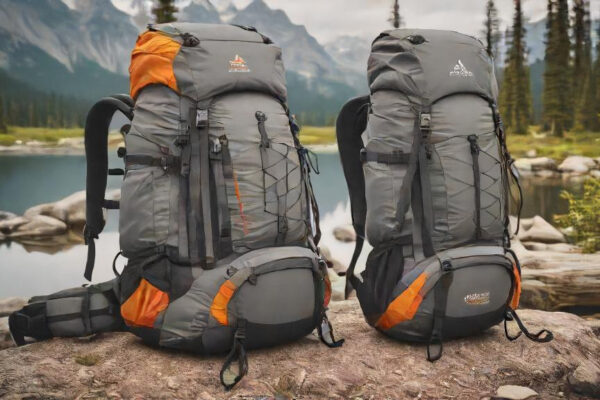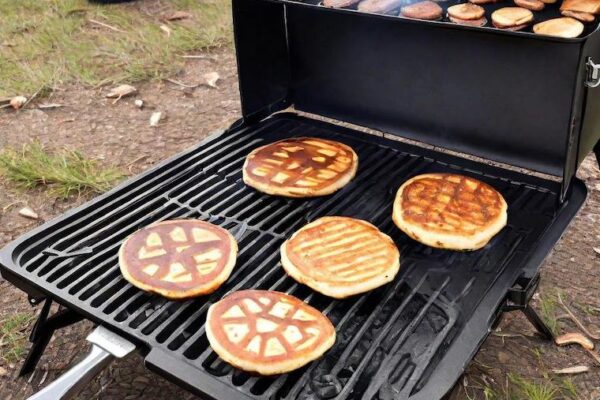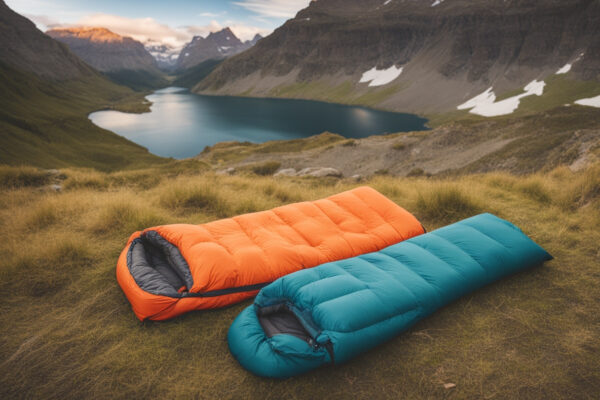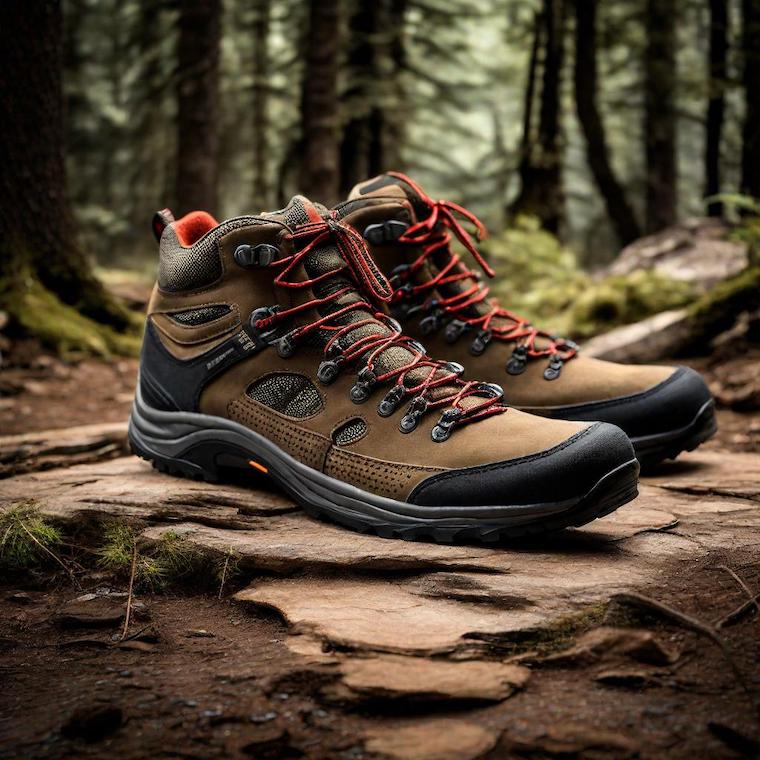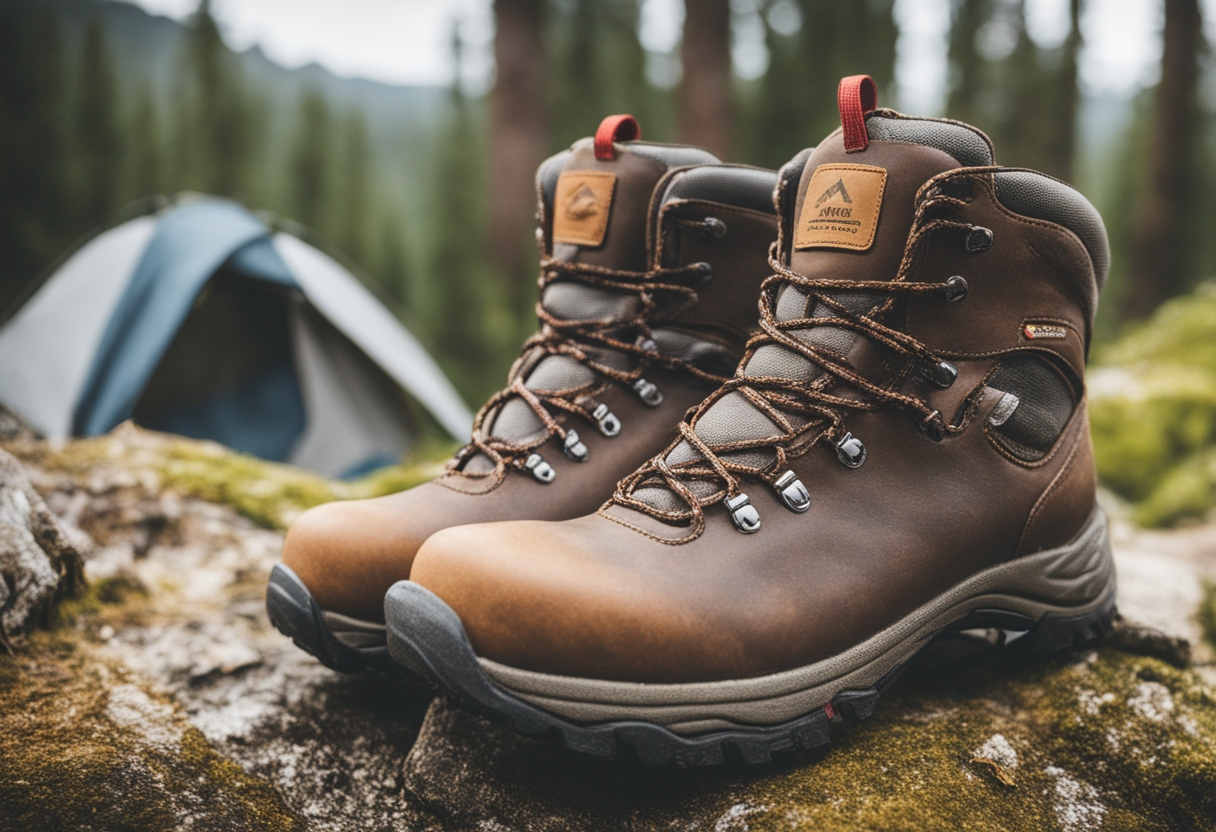
Types & Choosing the Right Camping Footwear
Choosing the right camping footwear is crucial for a comfortable and safe outdoor experience. Whether you’re hiking rugged trails, exploring wetlands, or camping in the desert, your footwear needs to be suitable for the terrain, weather conditions, and activities you’ll be engaging in. Here are some key considerations for selecting the right camping footwear:
- Terrain: Consider the type of terrain you’ll be traversing. For rugged trails with rocks and roots, sturdy hiking boots with ankle support are essential. For flat terrain or well-maintained trails, lightweight hiking shoes or trail running shoes may be more suitable.
- Weather: Check the weather forecast for your camping destination. Waterproof boots are necessary for wet conditions, while breathable shoes are ideal for hot weather. In colder temperatures, insulated boots or shoes with room for thick socks are recommended.
- Activity Level: Your footwear should match your planned activities. For long hikes, choose footwear with ample cushioning and support. For water activities like kayaking or river crossing, quick-drying water shoes are a good choice.
- Fit: Proper fit is crucial for comfort and preventing injuries. Ensure there is enough room in the toe box to wiggle your toes, and that your heel is secure without slipping. Consider trying on footwear later in the day when your feet are slightly swollen, as they will be during most camping trips.
- Comfort Features: Look for features that enhance comfort, such as cushioned midsoles, padded ankle collars, and moisture-wicking linings. Some shoes also have antimicrobial treatments to prevent odors.
- Break-in Period: If you’re buying new footwear, allow time to break them in before your camping trip to avoid discomfort and blisters.
- Consult Experts: If you’re unsure about the best footwear for your camping trip, consult with outdoor gear experts or experienced campers for recommendations.
Types of Camping Footwear
When it comes to camping, having the right footwear can make a significant difference in your comfort and safety. Here are some common types of camping footwear, along with their features, benefits, and ideal use cases:
- Hiking Boots:
- Features: Sturdy construction, ankle support, durable outsole with good traction, waterproof or water-resistant materials.
- Benefits: Provides stability and support on rugged terrain, protects feet from rocks and debris, helps prevent ankle injuries.
- Ideal Use Cases: Hiking on rough trails, backpacking trips, trekking in mountainous terrain, or any activity where ankle support and traction are crucial.
- Trail Running Shoes:
- Features: Lightweight and flexible, breathable mesh upper, cushioned midsole for comfort, lugged outsole for traction.
- Benefits: Offers agility and responsiveness, suitable for fast-paced hiking or running on well-maintained trails, quick-drying.
- Ideal Use Cases: Day hikes on moderate trails, trail running, or any activity where agility and comfort are priorities.
- Water Shoes:
- Features: Quick-drying materials, mesh upper for breathability, grippy outsole for traction on wet surfaces, lightweight.
- Benefits: Protects feet in water activities, such as kayaking, canoeing, or hiking in wet environments, prevents slipping.
- Ideal Use Cases: Water crossings, beach camping, river trekking, or any activity where your feet are likely to get wet.
- Sandals:
- Features: Open design for breathability, adjustable straps for a secure fit, durable outsole with good grip.
- Benefits: Provides comfort and ventilation in hot weather, easy to slip on and off, lightweight and packable.
- Ideal Use Cases: Campsite wear, short hikes on easy terrain, water activities in warm weather, or as a backup footwear option.
- Camp Shoes:
- Features: Lightweight and packable, slip-on design for convenience, comfortable for lounging around camp.
- Benefits: Gives your feet a break from hiking boots, allows them to breathe and relax at camp, keeps your primary footwear clean and dry.
- Ideal Use Cases: Wearing around the campsite, fording shallow streams, or as a comfortable option for evenings after a day of hiking.

Caring for Your Camping Footwear
Proper care for your camping footwear is essential to ensure its longevity and performance, especially in rugged outdoor environments. Here are some tips to help you maintain your camping footwear:
- Cleaning:
- Remove dirt and debris from your footwear after each use. Use a soft brush or cloth to clean the exterior.
- For stubborn stains, use a mild soap or cleaner recommended for the material of your footwear.
- Rinse your footwear thoroughly with clean water and allow it to air dry completely before storing.
- Waterproofing:
- Apply a waterproofing treatment to your footwear regularly, especially if it’s made of leather or fabric that can absorb water.
- Follow the manufacturer’s instructions for the waterproofing product you use, and reapply as needed based on your usage and the conditions you encounter.
- Drying:
- After use in wet conditions, remove the insoles and loosen the laces to allow air circulation inside the footwear.
- Avoid placing your footwear near direct heat sources, such as heaters or campfires, as this can damage the materials.
- Stuff your footwear with newspaper to absorb moisture and help them dry faster.
- Storage:
- Store your camping footwear in a cool, dry place away from direct sunlight and extreme temperatures.
- Avoid storing them in airtight containers or plastic bags, as this can trap moisture and lead to mold or mildew growth.
- Keep them away from chemicals or solvents that could damage the materials.
- Maintenance:
- Inspect your footwear regularly for signs of wear and tear, such as worn outsoles or loose stitching.
- Replace worn outsoles or repair any damage promptly to prevent further deterioration.
- Consider rotating between different pairs of footwear to prolong their lifespan and allow them to dry out fully between uses.
Foot Health and Camping Footwear
Maintaining foot health is crucial for enjoying a comfortable and injury-free camping experience. Proper footwear plays a significant role in preventing common foot issues that can arise while camping, such as blisters, foot fatigue, and injuries. Here’s why foot health is important and how the right footwear can help:
- Blisters: Blisters are a common problem when hiking or walking long distances, especially in ill-fitting or inappropriate footwear. Properly fitted and cushioned footwear can reduce friction and pressure on the skin, helping to prevent blisters from forming.
- Foot Fatigue: Walking on uneven terrain or for long periods can lead to foot fatigue and discomfort. Supportive footwear with cushioning and shock absorption can help reduce the strain on your feet, keeping them comfortable throughout your camping trip.
- Injuries: Proper footwear can help prevent common camping-related foot injuries, such as sprains, strains, and puncture wounds. Sturdy hiking boots with ankle support can provide stability on rough terrain, reducing the risk of twisting an ankle. Additionally, shoes with durable soles can protect your feet from sharp rocks and objects on the ground.
- Maintaining Mobility: Healthy feet are essential for mobility, especially in outdoor environments where you may need to navigate challenging terrain. By wearing footwear that supports your feet and provides adequate traction, you can move more confidently and safely during your camping adventures.
- Comfort and Enjoyment: Ultimately, taking care of your feet and wearing the right footwear can enhance your overall camping experience. Comfortable feet allow you to focus on enjoying the outdoors without being distracted by foot pain or discomfort.
Frequently Asked Questions
How should I choose the right camping footwear for my trip?
Consider the terrain, weather conditions, and activities you’ll be engaging in. Choose footwear that provides the necessary support, traction, and protection for your specific needs.
Do I need waterproof camping footwear?
Waterproof footwear is beneficial if you’ll be camping in wet or muddy conditions. It helps keep your feet dry and comfortable, especially during hikes or activities involving water.
Can I use regular sneakers for camping?
While regular sneakers may be suitable for some camping trips, they may not provide enough support and protection for rugged terrain or long hikes. It’s recommended to use footwear specifically designed for outdoor activities.
How do I prevent blisters while camping?
To prevent blisters, choose footwear that fits properly and is broken in before your trip. Use moisture-wicking socks and consider using blister prevention products or techniques, such as wearing two pairs of socks or using blister pads.
Should I bring multiple pairs of camping footwear?
Bringing multiple pairs of footwear can be beneficial, especially for longer trips or when encountering varying terrain. Having a backup pair can also be useful in case your primary footwear gets wet or damaged.
How do I clean and maintain my camping footwear?
Clean your footwear after each use with a soft brush or cloth and mild soap. Allow them to air dry thoroughly before storing. Apply waterproofing treatments as needed, and inspect them regularly for signs of wear and tear.
Are hiking boots necessary for camping?
Hiking boots are not always necessary, but they can provide added support and protection, especially for rugged terrain. Choose footwear based on the specific demands of your camping trip.
Can I use sandals for camping?
Sandals can be suitable for camping, especially in warm weather or for water-related activities. Look for sandals with sturdy soles and straps for support and protection.
How should I store my camping footwear when not in use?
Store your camping footwear in a cool, dry place away from direct sunlight and extreme temperatures. Avoid storing them in airtight containers or plastic bags, as this can trap moisture and lead to mold or mildew growth.
When should I replace my camping footwear?
Replace your camping footwear when they show signs of significant wear and tear, such as worn-out soles, loose stitching, or reduced cushioning and support. Proper maintenance and regular inspections can help prolong the lifespan of your footwear.

